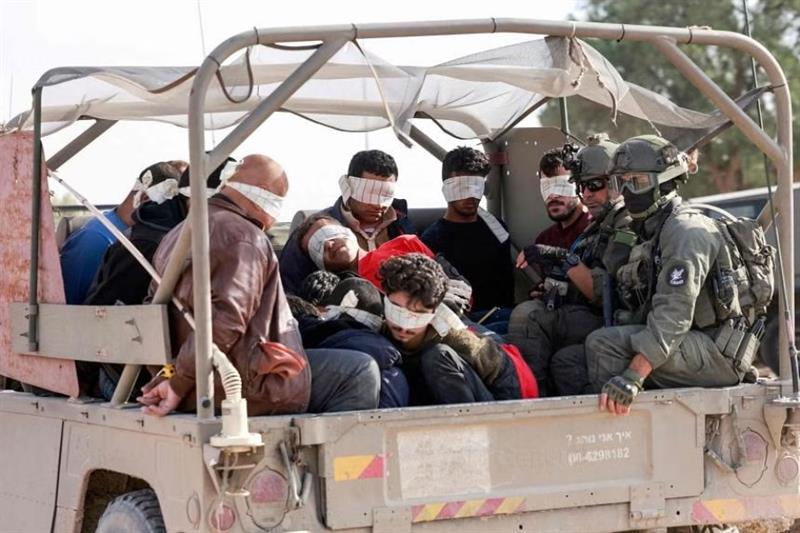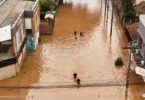JERUSALEM (Quds News Network): Twenty years ago, in the early months of 2004, the world was shaken by images showcasing brutal torture inflicted on Iraqi detainees at the Abu Ghraib prison west of Baghdad in 2004.
Today, 20 years after the publication of those shocking images, a similar pattern emerges at the hands of the Israeli occupying forces against detainees from the Gaza Strip, who have been subjected to a relentless war from the land, air and sea since October 7th of the previous year.
One Israeli soldier, identified as Yossi Gomez, shared a photo (later deleted from his Instagram account) standing in front of a stripped and handcuffed Gaza detainee. The scene is reminiscent of the horrifying images from Abu Ghraib prison.
These images are not the first published by Israeli forces for Palestinian civilians detained from Gaza. Since their ground invasion of Gaza in late October 2023, the Israelis have released numerous visuals depicting detainees blindfolded, handcuffed, partially or fully naked, or confined in large pits.
Testimonies from released Gaza detainees confirm that these images represent only a fraction of the torture they endure during arrest, which includes forced nudity, severe beatings, open-air confinement, electric shocks, deprivation of food, water, sleep, and the use of sexually explicit and offensive language.
One such testimony comes from Dr. Saeed Abdul Rahman Ma’rouf, who was arrested in December last year while working at the Al-Ahli Arab Hospital in Gaza. He recounts being handcuffed, blindfolded, and shackled for 45 days during his detention, forced to sleep on gravel without bedding or covering. His testimony sheds light on the level of brutality faced by detainees, with some losing nearly a third of their body weight.
In the latest crime against Gaza detainees, 30 bodies were discovered three days ago in Beit Lahia, northern Gaza, inside a school which had been besieged by Israeli forces. The bodies were found handcuffed and blindfolded, indicating they were held captive before being executed.
Israeli authorities refuse to disclose clear information about Gaza detainees in their prisons and camps, engaging in the additional crime of enforced disappearance under legal cover.
The persistence of Israel in keeping Gaza detainees forcibly disappeared suggests a decision to isolate them, allowing further covert crimes. Israel denies human rights institutions, both international and Palestinian, any information about the fate and whereabouts of these detainees, including those who died in Israeli detention.
Testimonies from released Gaza detainees reflect the level of brutality by Israeli forces, not sparing the elderly, women, and children. Alongside the crime of enforced disappearance, detainees face ongoing oppressive measures, including denial of family visits, lawyer meetings, confiscation of electrical devices, books, keeping them in the same clothes, prevention of haircuts, daily room searches, denial of medical care, and deliberate neglect of the sick.
Since ultranationalist Minister of National Security Itamar Ben-Gvir assumed his position, Israel has adopted a revenge policy against all Palestinian prisoners. However, since the start of the aggression on Gaza on October 7th, the occupation intensified these punitive and oppressive measures.
Arrests in the West Bank, including Jerusalem, have increased since the beginning of the aggression, with more than 6,540 people detained, including those arrested from homes, military checkpoints, and those forced to surrender under pressure or taken hostage.
The Abu Ghraib scandal of 2004 triggered global condemnation, with even then-U.S. President George W. Bush and British Prime Minister Tony Blair commenting on it. However, the images of Palestinian detainees, proudly shared by Israeli soldiers on social media, have not received the same reaction or mobilized the world. The world’s insistence on a double standard towards anything related to Palestine and its cause remains evident.







